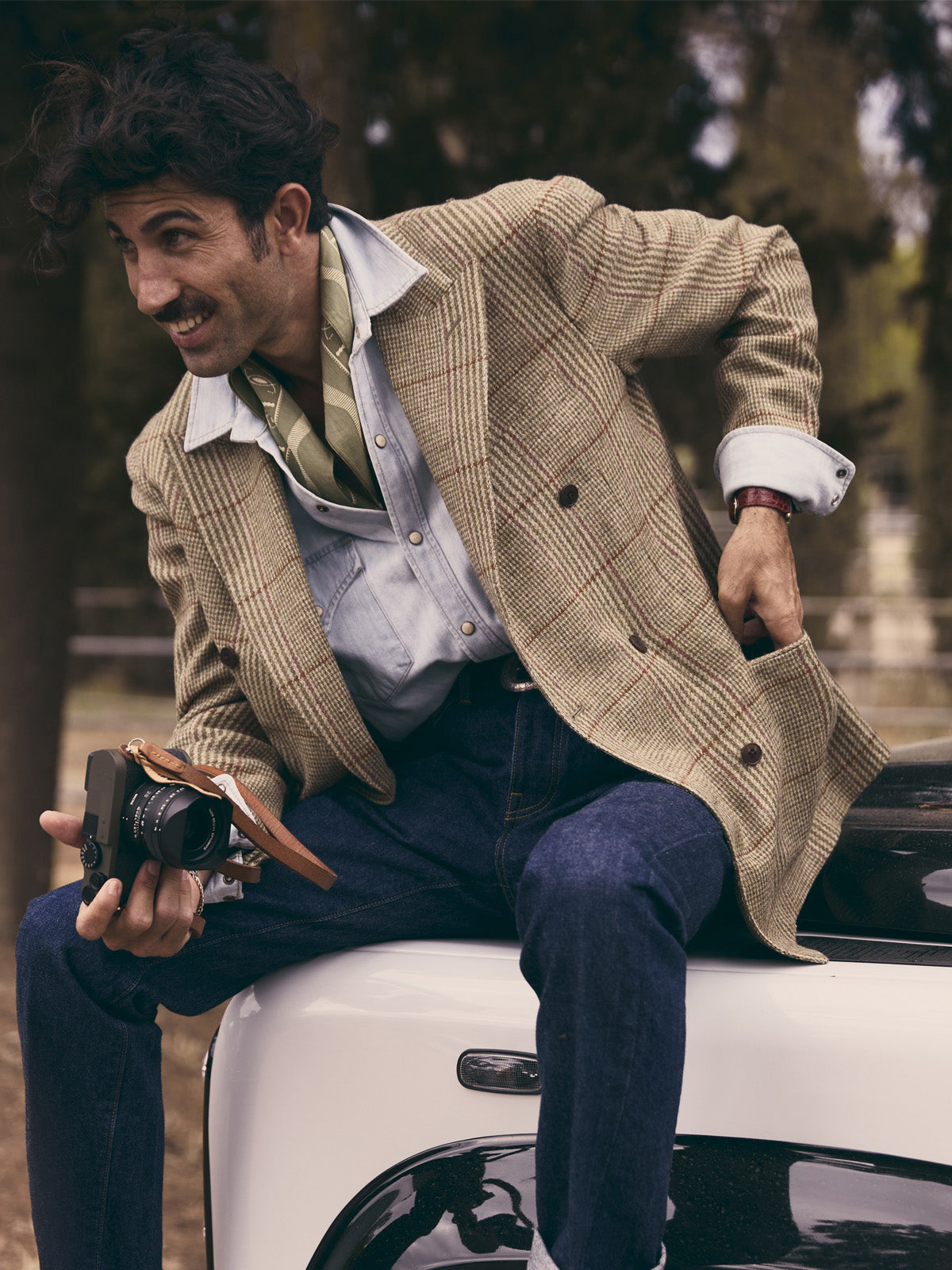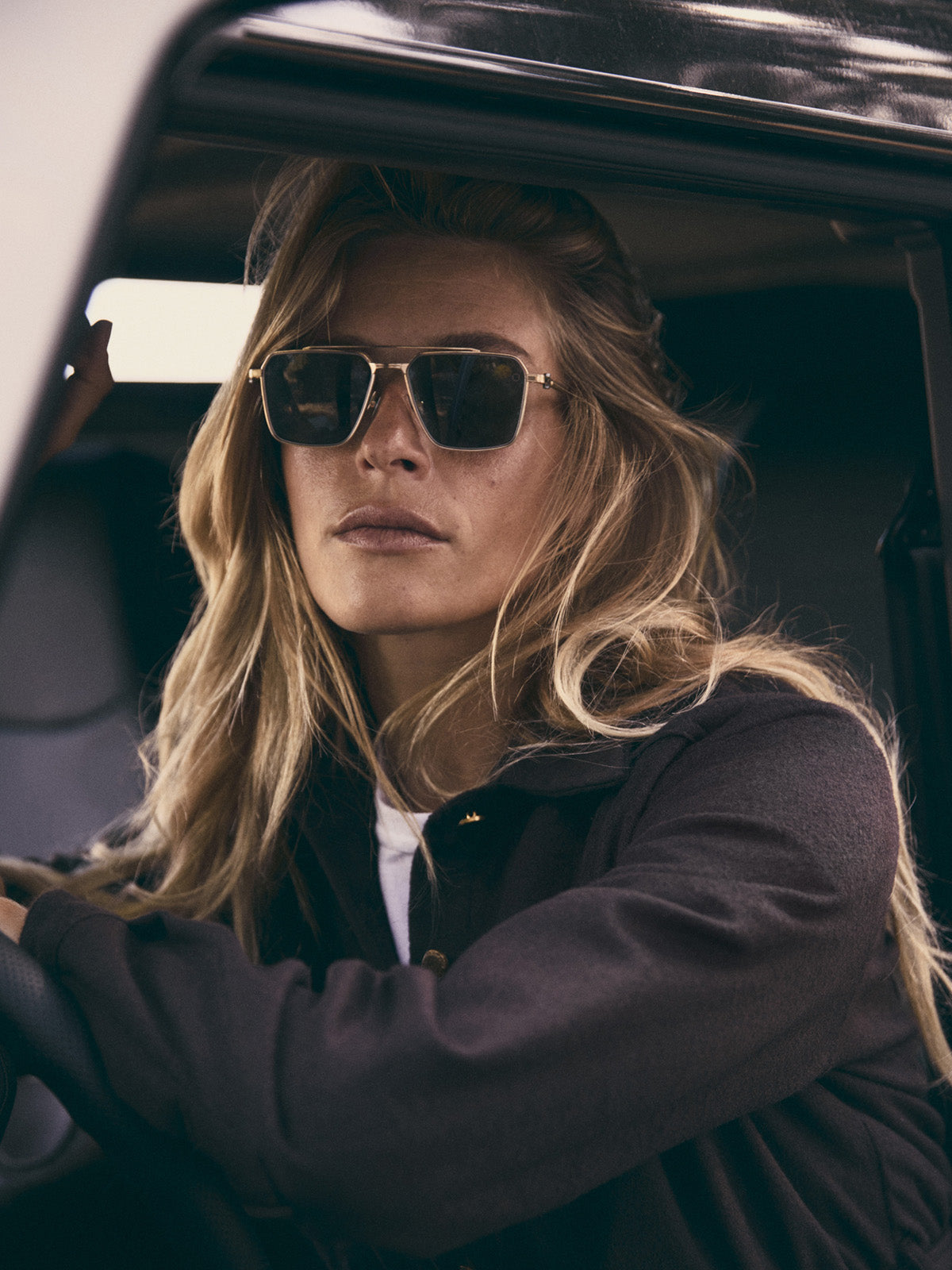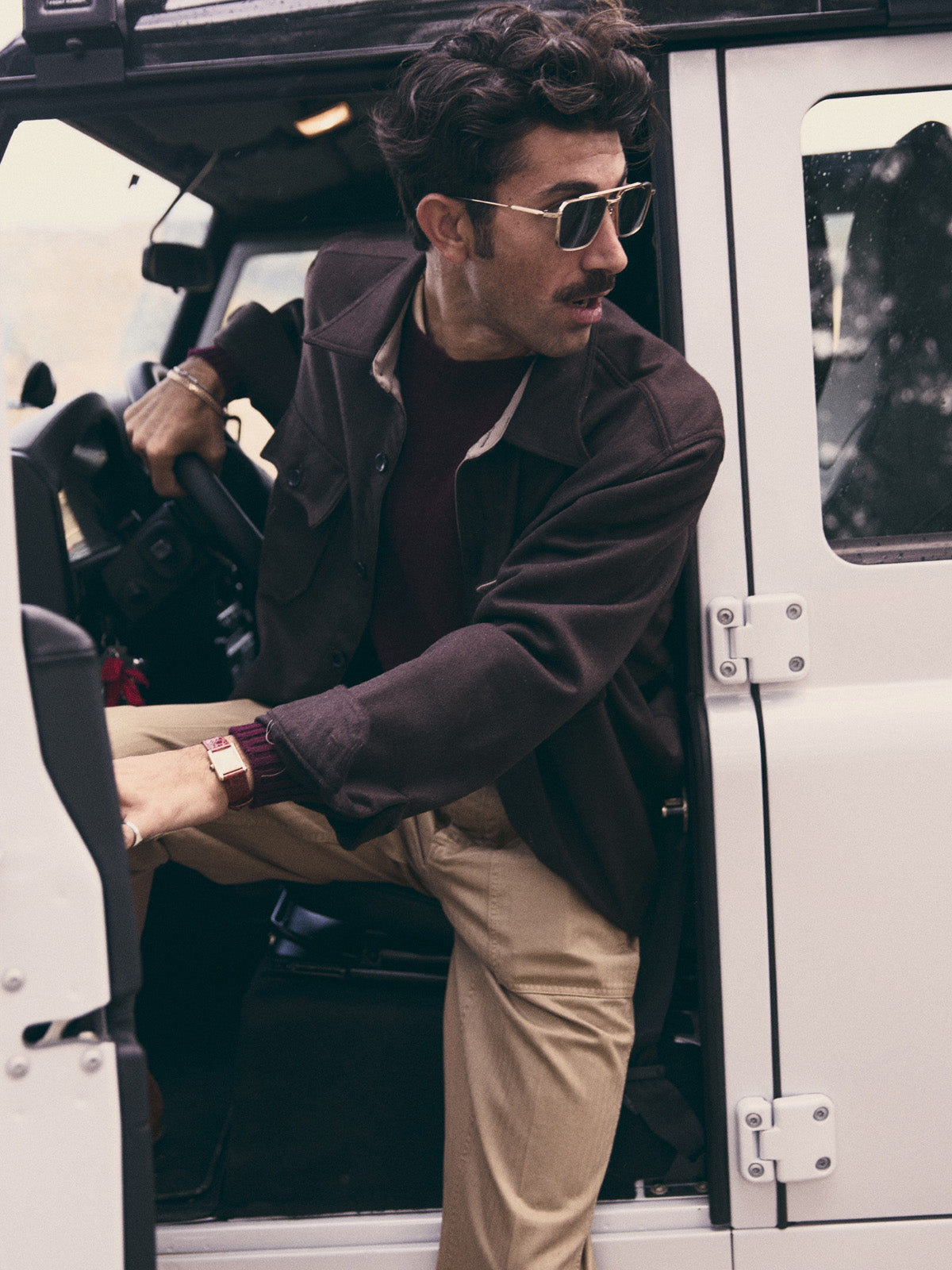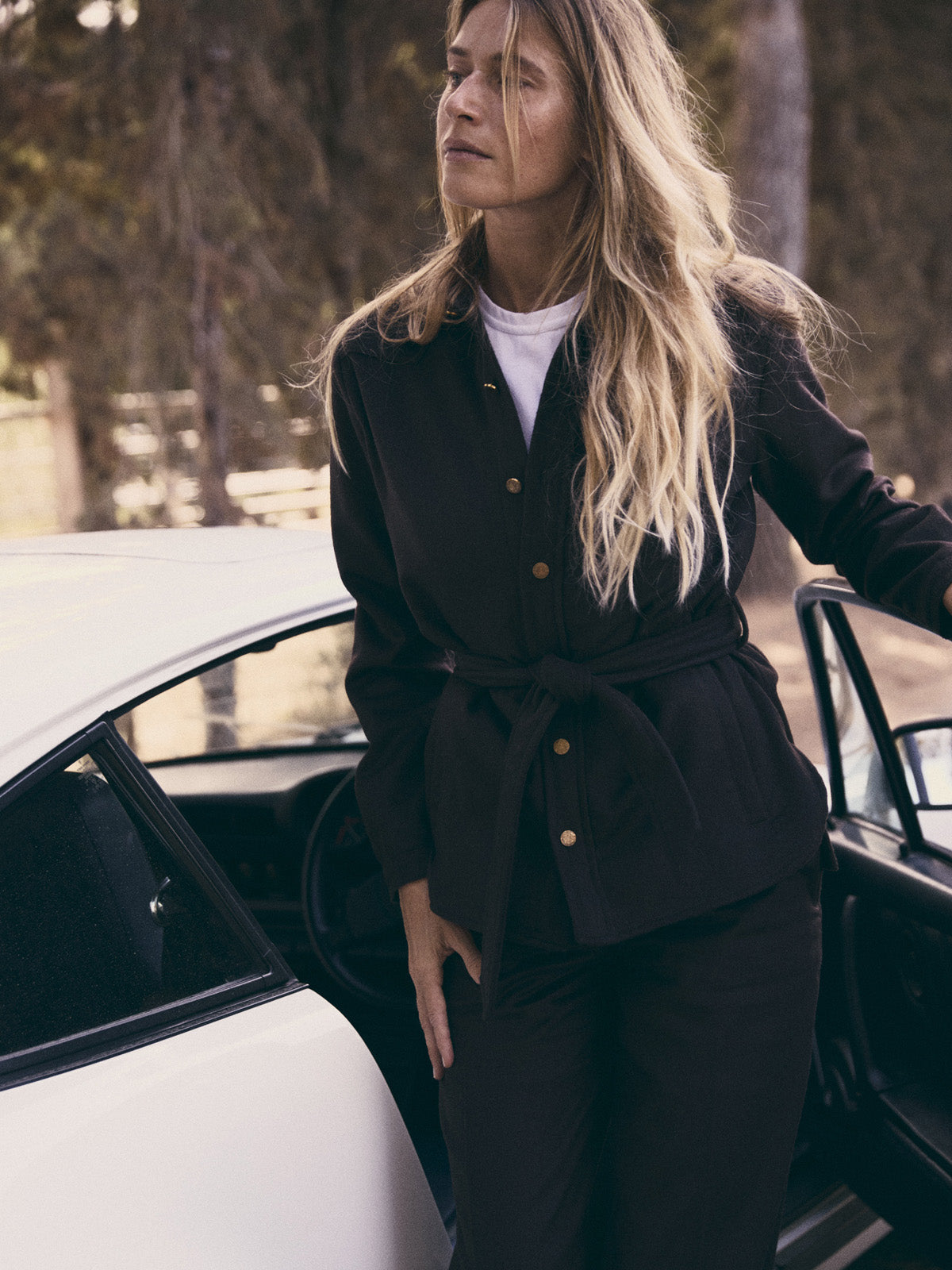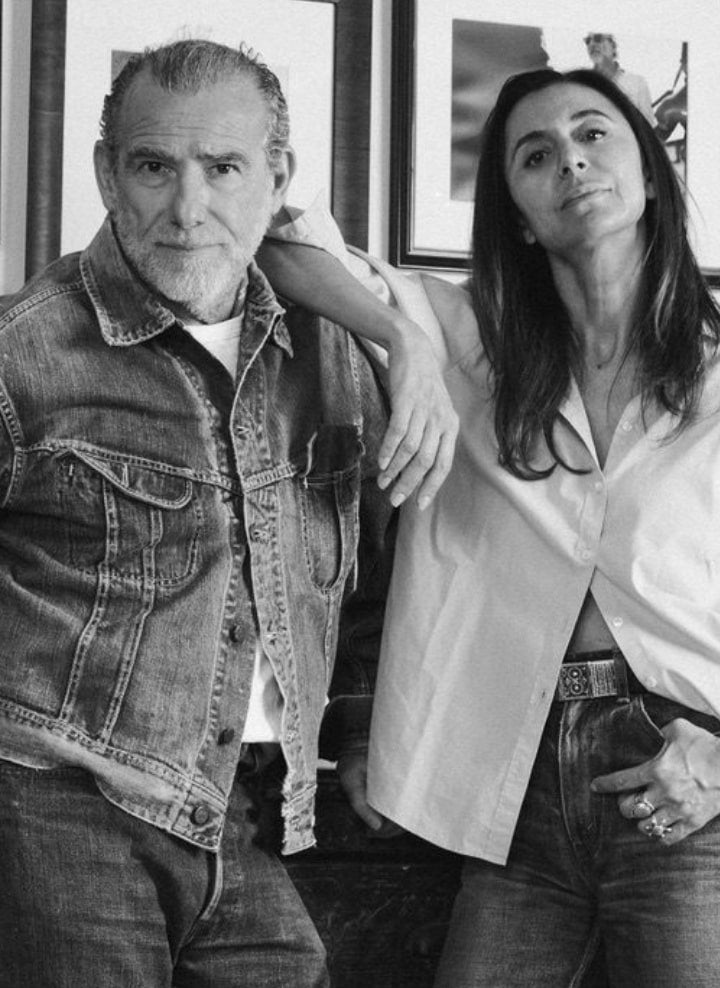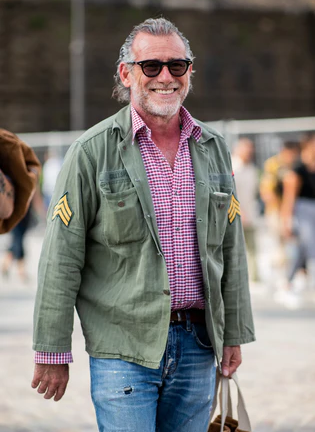Manuel Felisi: lo stile di un artista
The magical vitality, a sense of belonging. The mark of time as a vital trace, where memory is never nostalgia but a root. Manuel Felisi's artistic vision is also his ethic, an inseparable union for this 47-year-old artist who remains true to his soul and his calling. A man who embodies the Fortela ideal with practical nonchalance.

Felisi is a tout-court artist, a “multidisciplinary” creator by vocation, suspended between painting, photography, and installations (his poetic "piano under water" for Vinicio Capossela in the Sinfonia Numero performance stands out).
An identity that could not exist without community, a sweetness that is profound and eternal, like the embrace of an ancestor. His art carries the strength of memory—it comforts rather than shocks, welcomes rather than repels.
Opposed to consumerist ambitions, even his lifestyle and dress reflect his ethic. Manuel is a man of “armor,” as he describes it: he loves a comfortable, agile, representative look. Something that acts as both protection and an icon, that can be tinged with color and creativity, yet brings him into the world with confidence. Those familiar with Fortela’s flair will clearly see the deep connection between this artist and the brand.

We photographed him wearing the spring collection, during an interview at his new Milano studio.
Felisi’s upcoming show at the Museo Carlo Bilotti in Villa Borghese, Rome, features his latest works – 80 animal paintings on wood, part of the “Uno a Uno” series, and is being organized by Galleria Russo in collaboration with the Fondazione Bioparco di Roma, curated by Gabriele Simongini.
It runs through April 22.

Where are we?
“At the far end of Viale Padova, Milano. I moved here recently. There’s still a real neighborhood feel here, where you see smiles on people’s faces. It’s a beautiful reality, a piece of Milano as I remember it. I recently moved from Via Ventura in Lambrate. After Massimo De Carlo moved his gallery out, I was the only artist left… it was time for me to move on. This new situation has brought me so much joy; I’ve discovered a fantastic neighborhood.”
For example?
“You rediscover the old neighborhood life here—the local shop, people calling you by name, a social fabric. My studio is across from the post office, and I watch people in line. There are smiles, visual exchanges—I love it.”
Where do you come from, Manuel?
“I have Sicilian roots, but I was born and raised in Milano—actually, a true Lambrate native. Apart from a brief passionate stint in Istanbul, I’ve always been here.”

How did your work begin?
“I pursued the most classical path: art high school and then the Accademia di Brera, where I studied sculpture. Initially, I wanted to be an architect. Then I met an architecture professor, shifted to sculpture, and later, an anatomy professor made me fall in love with painting. It was a chain of encounters that brought me here. At first, I was very shy about talking about my work. To support myself, I did set design, but there was always this part of me—the artist—that was hard to explain or communicate.”
What are your works about?
“My painting is deeply tied to memory and recollection. My first works were painted on worn-out sheets that had belonged to my grandmother. I’ll say something that may sound somewhat unorthodox: You may or may not like my paintings, but they always dig into people’s memories. They never leave you without a foothold. I’m interested in reconnecting with memory. People who know me know I’m obsessed with flea markets, antiques, and ‘old stuff.’ I love exploring a city’s history through the ‘old fabric’ it discards. I always think: What do people throw away? And why?”
Like an anthropological investigation…
“Exactly. In the first flea markets I visited with my parents, I remember people still selling kneelers because, just a few decades earlier, people used them daily. A historical trace of vanished habits. That’s how I view flea markets or junk shops: as core sampling of history. If you look at what’s for sale, you see over time what has happened, what has changed. The flea market is the ‘core sample of cultural moments’: some things are discarded, others are kept. This alternating is fundamental for new life to emerge. A bit like what I did with the piano in the performance with Vinicio Capossela (Sinfonia Numero, 2012), where I stripped the piano of notes and sounds, letting the rain tap on its keys instead. That gave it a new identity from which new things—mold even—could emerge.”
How would you define your style of dress?
“I wouldn’t precisely define my style. I’d say it’s monochromatic, simple. Lately, I wear loose-fitting clothes. I never follow trends, but I care about taste—my taste. I like feeling comfortable in certain situations. This is my uniform; it identifies me. Fortunately, my job allows me to ‘strut around’ and dress any way I like, even in jeans and a T-shirt. People are very forgiving when it comes to artists! But now more than ever, I want to feel comfortable in my clothes. I don’t like clothing with a short life—low-quality fabrics, fleeting esthetics. I can’t stand deconstructed coats that look great for three months, then suddenly look ridiculous and out of fashion. I prefer something classic with strong personality. That’s why I love Fortela’s style.”

How do you usually dress for work?
“I always start work without changing clothes. I tell myself I’ll just paint a couple of details, and then I end up getting dirty. Paradoxically, if I wore something more thoughtful, I’d ruin it. Instead, with this ‘uniform,’ which is a little oversized, it’s like wearing my canvas. Even if I stain it with paint, I’m ready for anything—from drinks to a formal dinner. It’s my artist-warrior armor. Hands are a different story. I get them dirty all the time and hate having them messy. But a paint stain on my pants or shoes doesn’t bother me. After all, Jean-Michel Basquiat painted in Armani suits, a habit—maybe a strategy ‘borrowed’ from Picasso and Salvador Dalí. I like Basquiat. My latest painting series, featuring clouds, is full of references to him, like the use of spray cans typical of graffiti artists.”
How did your connection with Fortela begin?
“I met Alessia Giacobino, the women’s line designer, because she became friends with my girlfriend. There was an immediate connection. That’s how I discovered and loved the brand and the men’s collection, which reflects me. Fortela has that spontaneous style. It fits into a space I belong to—a fashion concept that feels right, like my ‘armor,’ which I feel part of.” Your favorite color? “Blue. I always use it. I always start from white and then mix in pigment, but my first pigment is always blue. Even if I’m making green, I start with blue. I love it: when I paint trees, I always paint the sky first. Blue is always there. I love all its shades… and all the colors that come from it. Being a primary color, it ‘gives’ so much to others.”
Your favorite accessory?
“I love hats—my grandfather’s Borsalinos and the fedoras I’ve collected over time. I always wear a hat, from woolen beanies to trucker caps. But my true obsession is an old leather suitcase that has never left me. I bought it as a teenager. It cost a million lire, and I got it discounted at Paolo Sarpi’s during a clearance sale. I was just 18, and that was a fortune—I spent all my savings on it. Since then, it’s been my suitcase, always with me. It’s cumbersome, heavy, doesn’t fit in overhead luggage racks… but I’ll never break down and get one of those suitcases on wheels! Of course, repairing it costs more than getting a new one, but I can’t part with it. Ah, the tricks memory plays on you…”
Interview by Benedetta Rossi

